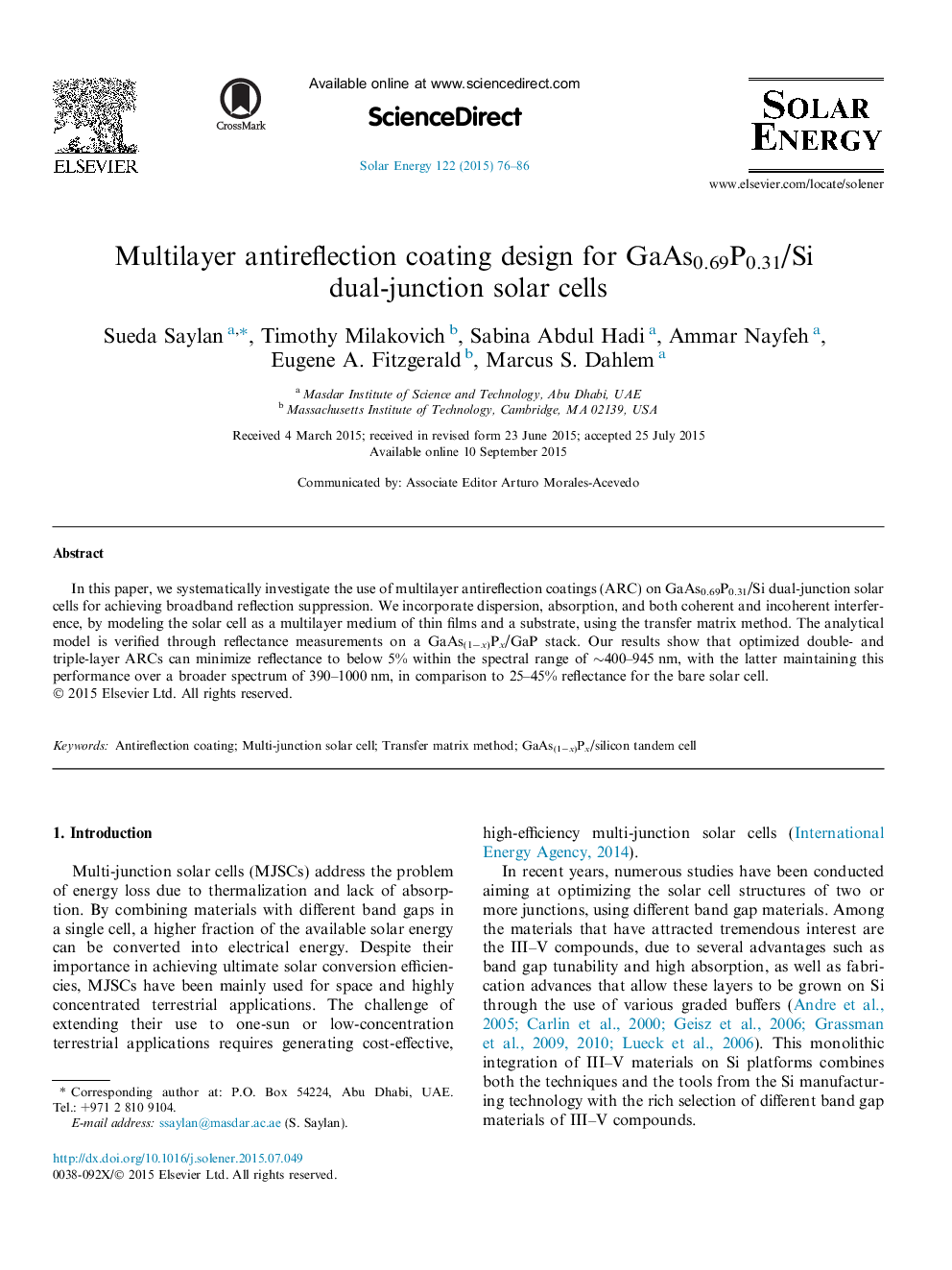| Article ID | Journal | Published Year | Pages | File Type |
|---|---|---|---|---|
| 1549564 | Solar Energy | 2015 | 11 Pages |
•Double- and triple-layer antireflection coatings for multi-junction solar cells.•Analysis based on transfer matrix method.•Reflectance suppressed below 5% over the spectral range of interest (400–945 nm).•Solar weighted reflectance between 2.86% and 4.37%, compared to 32.22% from bare cell.•Flexible technique that can be used to design ARCs for any solar cell.
In this paper, we systematically investigate the use of multilayer antireflection coatings (ARC) on GaAs0.69P0.31/Si dual-junction solar cells for achieving broadband reflection suppression. We incorporate dispersion, absorption, and both coherent and incoherent interference, by modeling the solar cell as a multilayer medium of thin films and a substrate, using the transfer matrix method. The analytical model is verified through reflectance measurements on a GaAs(1−x)Px/GaP stack. Our results show that optimized double- and triple-layer ARCs can minimize reflectance to below 5% within the spectral range of ∼400–945 nm, with the latter maintaining this performance over a broader spectrum of 390–1000 nm, in comparison to 25–45% reflectance for the bare solar cell.
